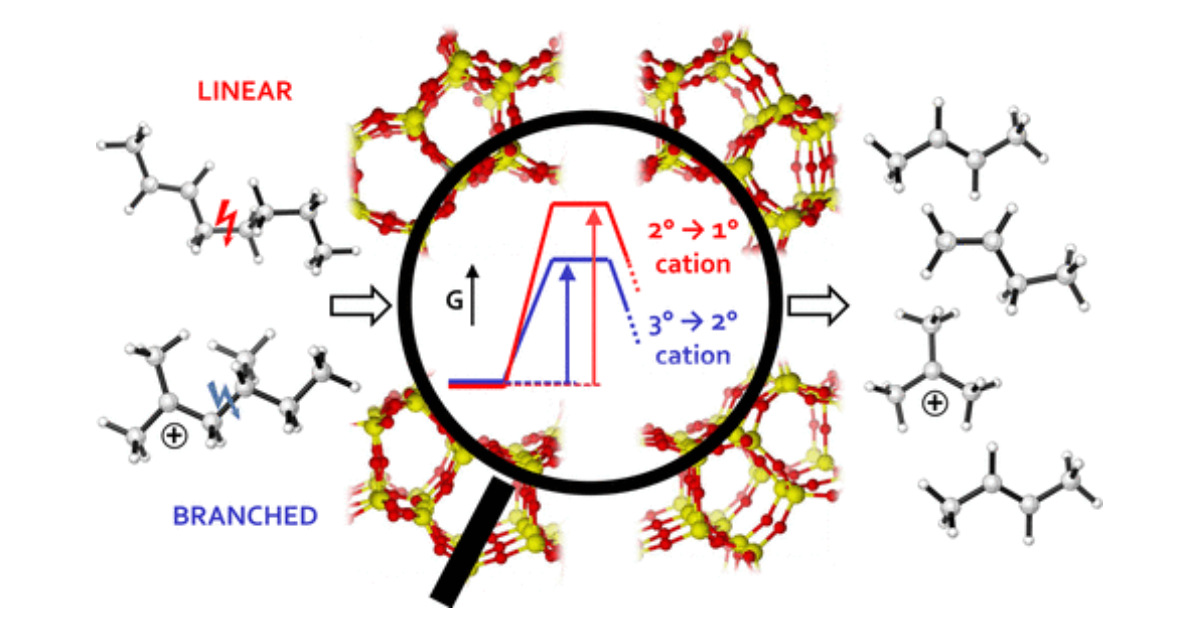How Chain Length and Branching Influence the Alkene Cracking Reactivity on H-ZSM-5
P. Cnudde, K. De Wispelaere, L. Vanduyfhuys, R. Demuynck, J. Van der Mynsbrugge, M. Waroquier, V. Van Speybroeck, ACS Catalysis 2018 8 (10), 9579-9595.

Abstract
Catalytic alkene cracking on H-ZSM-5 involves a complex reaction network with many possible reaction routes and often elusive intermediates. Herein, advanced molecular dynamics simulations at 773 K, a typical cracking temperature, are performed to clarify the nature of the intermediates and to elucidate dominant cracking pathways at operating conditions. A series of C4–C8 alkene intermediates are investigated to evaluate the influence of chain length and degree of branching on their stability. Our simulations reveal that linear, secondary carbenium ions are relatively unstable, although their lifetime increases with carbon number. Tertiary carbenium ions, on the other hand, are shown to be very stable, irrespective of the chain length. Highly branched carbenium ions, though, tend to rapidly rearrange into more stable cationic species, either via cracking or isomerization reactions. Dominant cracking pathways were determined by combining these insights on carbenium ion stability with intrinsic free energy barriers for various octene β-scission reactions, determined via umbrella sampling simulations at operating temperature (773 K). Cracking modes A (3° → 3°) and B2 (3° → 2°) are expected to be dominant at operating conditions, whereas modes B1 (2° → 3°), C (2° → 2°), D2 (2° → 1°), and E2 (3° → 1°) are expected to be less important. All β-scission modes in which a transition state with primary carbocation character is involved have high intrinsic free energy barriers. Reactions starting from secondary carbenium ions will contribute less as these intermediates are short living at the high cracking temperature. Our results show the importance of simulations at operating conditions to properly evaluate the carbenium ion stability for β-scission reactions and to assess the mobility of all species in the pores of the zeolite.